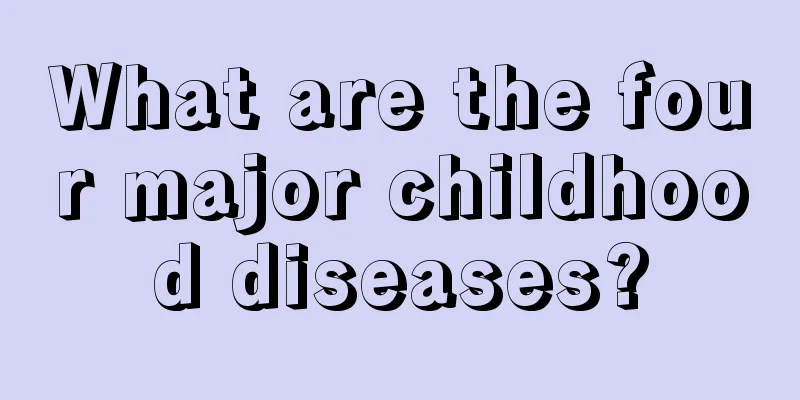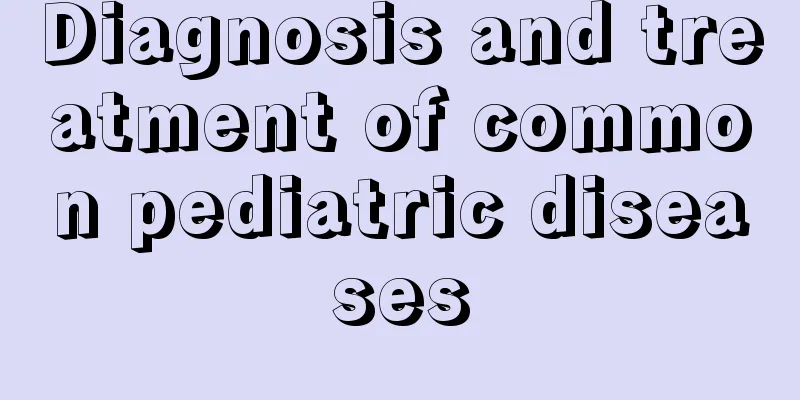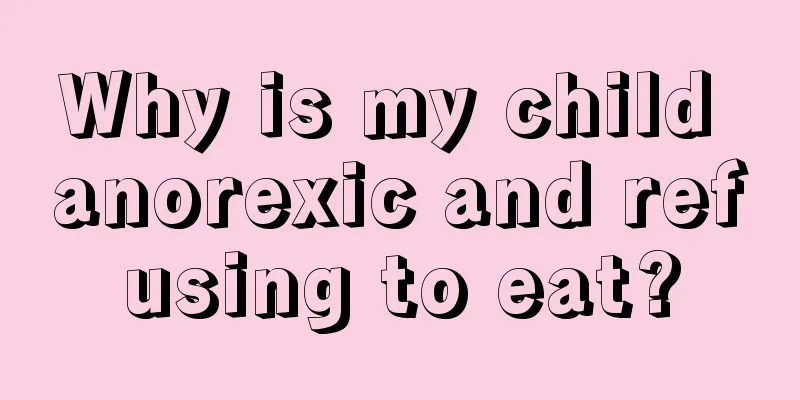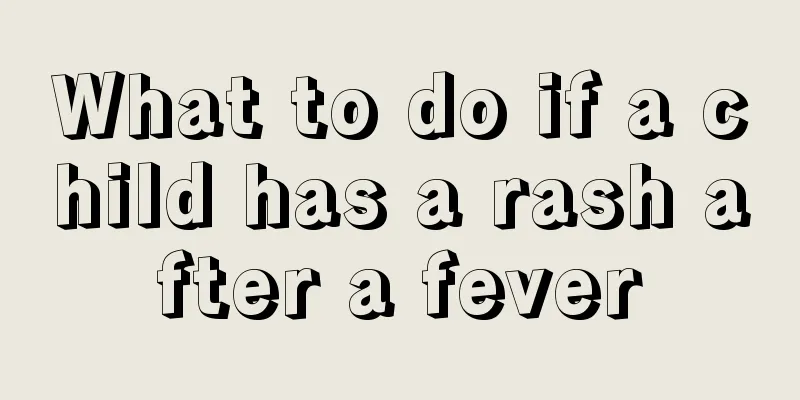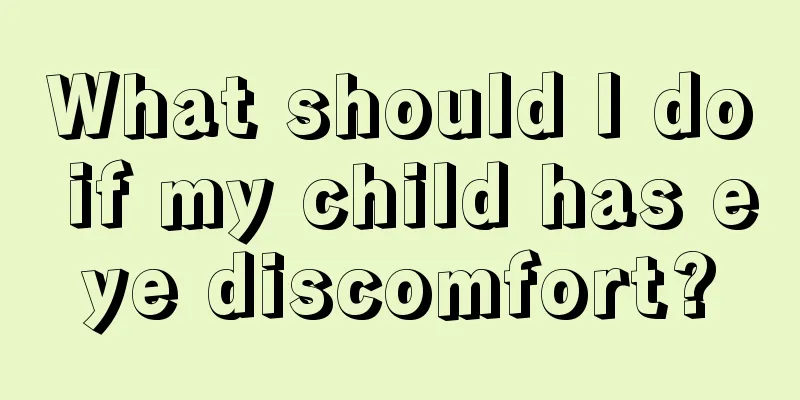The fastest way to reduce phlegm in babies

|
Babies are often prone to illness due to their young age because their body development systems are not yet complete. Therefore, when the resistance is relatively low, various treatment methods should be chosen. However, colds and fevers are inevitable, not only for babies but also for adults. Therefore, the issue that should be paid special attention to is that effective treatment measures must be taken after the baby becomes ill. The fastest way to reduce phlegm in babies_How to reduce phlegm when babies have a lot of phlegm and cough How to help your baby eliminate phlegm quickly 1. Diet therapy. Dietary therapy to eliminate phlegm is the most commonly used method to treat children with phlegm. This method not only solves the troubles of mothers in feeding medicine, but is also very convenient to operate. If the baby has phlegm due to a wind-heat cold, the mother can boil some white radish water or stew some Sichuan loquat and pear for the baby to drink, which can moisten the lungs and reduce phlegm. If the baby has phlegm due to a wind-cold cold, the mother can make some roasted oranges or ginger, brown sugar and garlic water for the child to drink, which can effectively reduce phlegm. 2. Patting the back to eliminate phlegm. If the baby's condition is not too serious, the mother can let the child lie prone on the bed with his feet high and his head low, and then repeatedly pat the baby's back with a force that the baby can bear. This will help the baby quickly cough out the phlegm in the body and resolve the discomfort in the baby's throat. Generally speaking, parents can achieve the effect of removing phlegm by patting the baby's back for five minutes each time. If the baby shows any discomfort, parents should stop patting the back immediately. 3. Drink water method. If the baby is relatively older, he or she may have learned to cough up phlegm on his or her own. Parents can let their babies drink more warm water, which will gradually dilute the phlegm in the baby's body and make it easier to expel the phlegm. 4. Hot compress. Parents can put a warm water bag of moderate temperature on the lung reflex area of the bag to improve the baby's lung function and enhance the baby's body's ability to eliminate phlegm. If you don't have a hot water bottle at home, using a hot towel can achieve the same effect. In addition, mothers must pay attention to the temperature when applying hot compresses, and avoid scalding the baby's skin due to high temperature. What is the reason for the baby's cough and phlegm? The baby is coughing! The baby has phlegm! Where do this cough and phlegm come from? To be precise, phlegm is something that everyone has and it is a secretion in the respiratory tract. However, when foreign pathogens or other irritants invade, secretions will increase and be mixed with the residues after the body's battle with pathogens, so the color and amount of sputum will change, causing discomfort and irritation to the respiratory tract. The main causes of coughing with phlegm are: upper respiratory tract infections, such as rhinitis, sinusitis, and pharyngitis; lower respiratory tract infections, such as bronchiolitis and pneumonia. The main symptoms include breathing noises, difficulty feeding, rapid breathing, large chest rise and fall, and coughing. Both upper and lower respiratory tract infections can easily cause infants to cough and produce phlegm. If a baby coughs and has phlegm but is not properly treated, it will have adverse effects on the baby's health. The accumulation of phlegm can easily cause complications such as otitis media and pneumonia. The structure and function of the Eustachian tube in infants and young children are not as good as those in adults. The secretions from the nasopharynx can easily ascend to the middle ear cavity through the Eustachian tube, causing middle ear effusion or even acute otitis media, so you must be careful. In addition, it is not uncommon for sputum to flow back into the trachea and bronchioles. In severe cases, it may even cause pneumonia: Some babies may also suffer from aspiration pneumonia due to drinking milk and coughing. If the baby does not receive proper treatment, it may cause respiratory distress, respiratory failure, or even more serious consequences. |
<<: The best medicine for reducing phlegm in infants and young children
>>: What is the appropriate humidity in a baby's room?
Recommend
Will children have dark blue stools after taking anti-inflammatory drugs?
After a baby is born, it is common for him to get...
Symptoms of neurodevelopmental disorders in children
For children, they will always encounter various ...
Are mosquito repellent buckles harmful to babies?
We all know that mosquitoes are particularly anno...
Are gastrointestinal flu symptoms serious in children?
In fact, the so-called stomach cold in children i...
Normal color of newborn's lips
The color of people's lips is closely related...
What to do if your six-month-old baby has a red bottom
Many mothers have encountered the situation of ba...
Is it normal for a six-month-old baby’s anterior fontanelle to close?
Generally speaking, whether the baby's fontan...
Redness and swelling at the vaccination site
When you go to the maternal and child health care...
What is the cause of the blood clot in the newborn's eye?
Many parents found blood clots in their newborn b...
Why does a child cough up yellow phlegm?
The problem of children coughing up yellow sputum...
Causes of precocious puberty in children
Children nowadays are not as innocent as before. ...
What to do if your child sweats profusely
Cold is a very common disease that can occur all ...
How to judge whether a child's nails are white?
Nowadays, it is not uncommon to see children with...
What is children's cough massage?
Coughing is a common symptom of pediatric disease...
If your baby has pinworms in his anus, be careful of these symptoms
In daily life, about 1/3 of patients will be infe...

